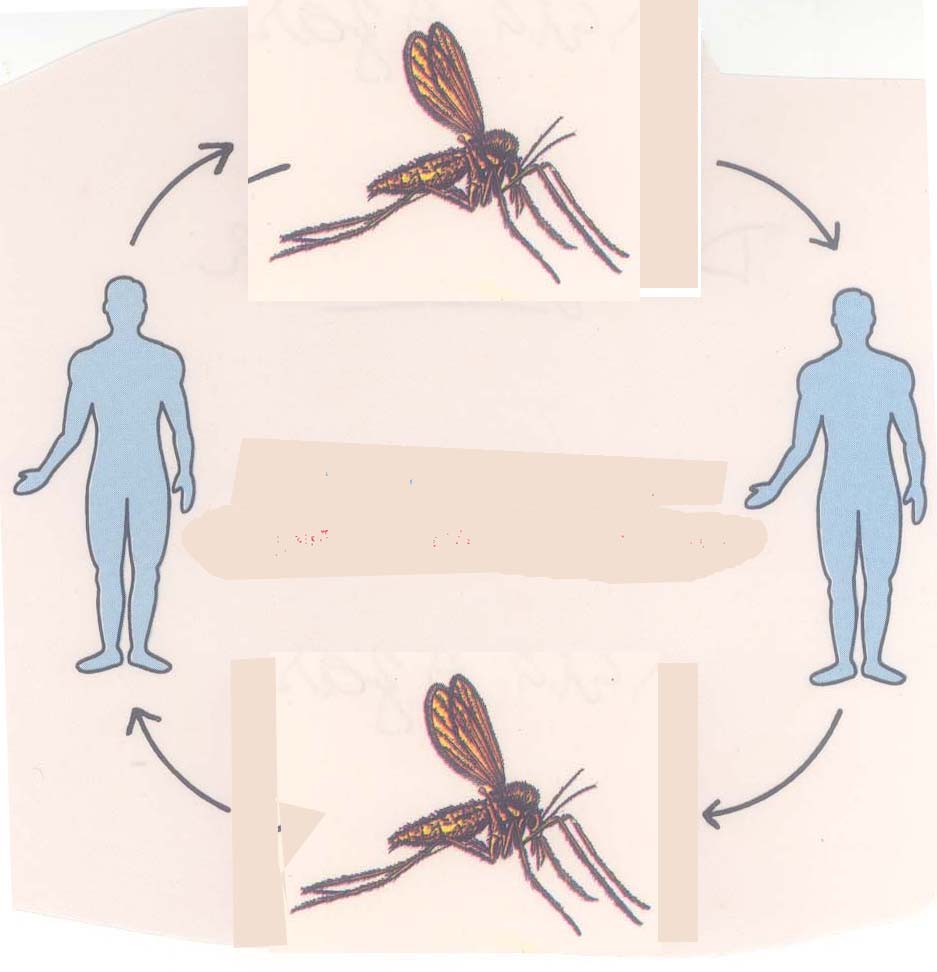HOW KALA-AZAR IS TRANSMITTED?
Back
- Kala-azar is a vector borne disease
- Sandfly of genus Phlebotomus argentipes are the only known vectors of kala-azar in India
- Indian Kala-azar has a unique epidemiological feature of being Anthroponotic; human is the only known reservoir of infection
- Female sandflies pick up parasite (Amastigote or LD bodies)while feeding on an infected human host.
- Parasite undergo morphological change to become flagellate (Promastigote or Leptomonad), development and multiplication in the gut of sandflies and move to mouthparts.
- Healthy human hosts get infection when an infective sandfly vector bites them.



























